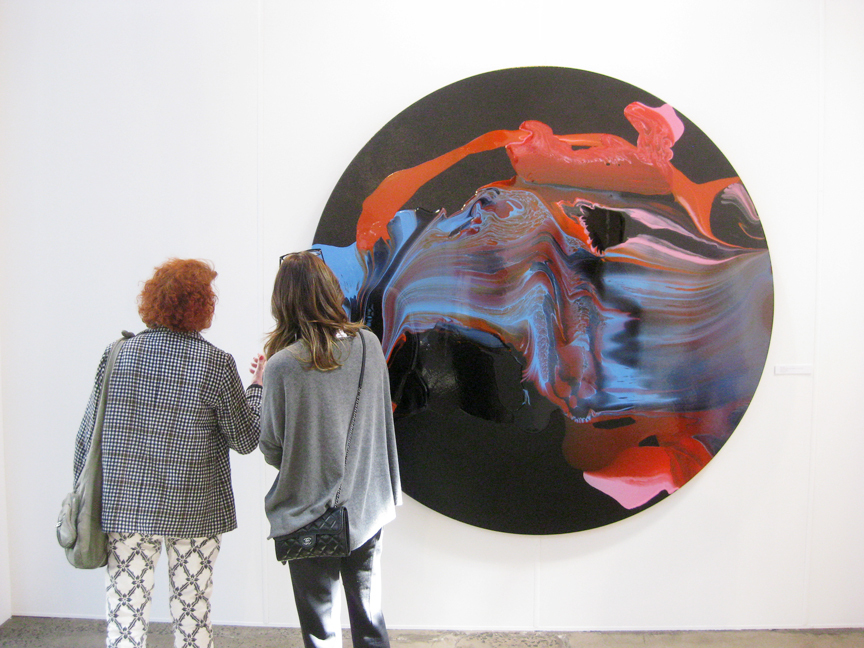
R
E
V N
E
X
T
More than 28,000 visitors flocked to the inaugural Sydney Contemporary art fair (September 19–22) at Carriageworks, an inner-city art space housed in a historic railway carriage workshop. On the opening night alone, 14,000 crowded into the venue, causing acute crowd control problems and nearly exceeding the overall number of visitors projected to visit the harbor city’s first major international art fair throughout its duration.
Tim Etchell’s, the fair’s founder, who is also credited with leading Art HK from a standing start in 2008 to becoming the “region’s third biggest Asian art fair,” had anticipated no more than 3,000 attendees. With the proliferation of freebie VIP passes, however, numbers quickly ballooned to 10,000 causing traffic gridlock and even the shutting down of the local Redfern railway station due to overcrowded platforms.
The fair played host to 83 Australian and international galleries from 11 countries representing artists mainly from Australia and the Pacific rim. International gallerists were surprised and taken aback by the enthusiastic reception. Pascal de Sarthe, owner of Hong Kong’s de Sarthe Gallery, admitted that while he enjoyed the response, he eventually had to give up “trying to show people art.” Similarly, Tokyo’s Whitestone Gallery art advisor, Kayo Fushiya, cited the lack of crowd control as a problem, and suggested that the fair’s organizers had a way to go in making international galleries feel comfortable.
But Sydneysiders love a good party and most attendees were happy to sip wine and gawk at each other rather than at the art, which ranged drastically from mediocre to museum quality.
Australian galleries, which outnumbered the internationals by 8 to 1, reported brisk sales among works with a price tag below AUD 60,000. Brisbane’s Jan Murphy Gallery sold 80 percent of its wares by lunchtime on the second day, including ornate paintings by Austrailian artist Danie Mellor at that price point and below.
While overall sales were reportedly mixed, hovering around AUD 10 million, one thing everyone agreed on was the quality of the venue. In its stark white booths and concrete floors, the works on display shone brightly.
Michael Young is contributing editor for ArtAsiaPacific.



